Oenothera primiveris, Large Yellow Desert Primrose
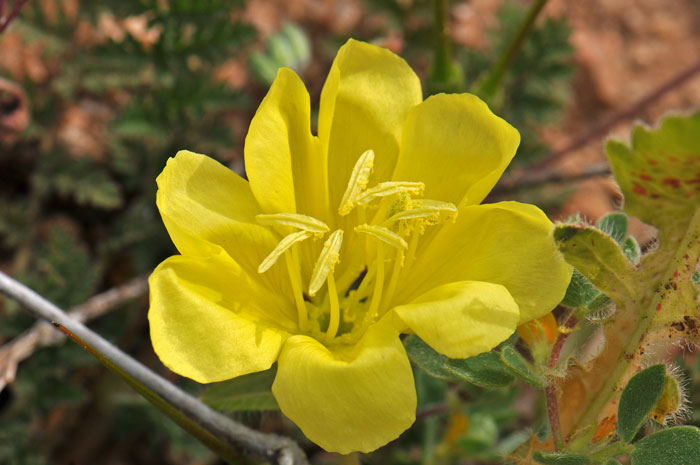
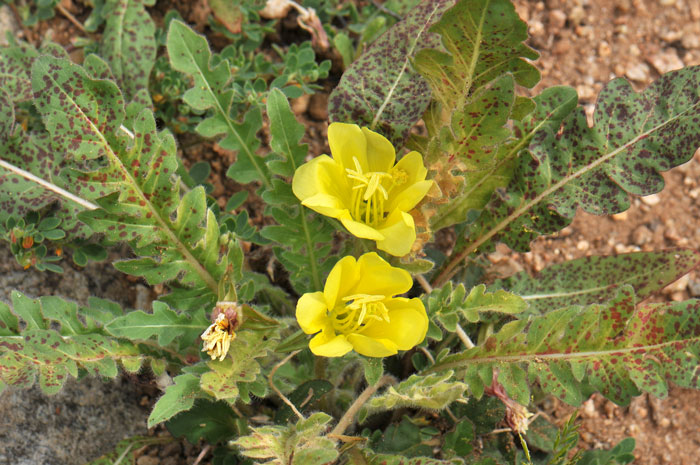
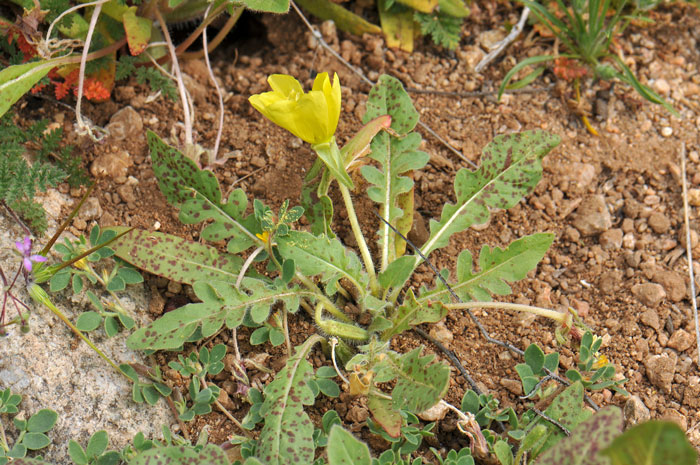
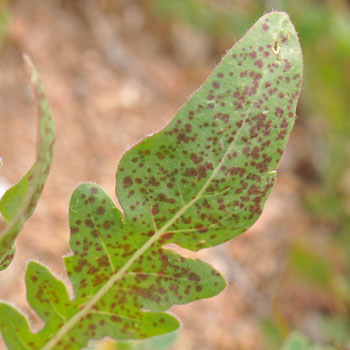
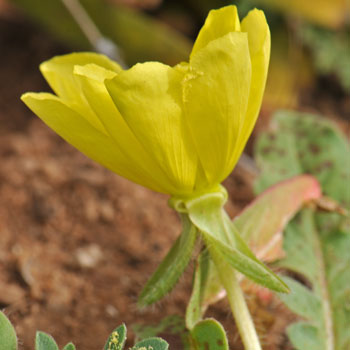
Scientific Name: Oenothera primiveris
Common Name: Large Yellow Desert Primrose
Also Called: Desert Evening Primrose, Desert Eveningprimrose, Desert Evening-primrose, Yellow Desert Primrose, Yellow Desert Evening Primrose, Yellow-flower Desert Evening-primrose (Spanish: Flor de San Juan)
Family: Onagraceae, Evening Primrose Family
Synonyms: (Oenothera primiveris var. primiveris)
Status: Native
Duration: Annual;
Size: Up to 12 inches or so.
Growth Form: Forb/herb; rosetted, usually without stems erect or ascending.
Leaves: Green; oblanceolate, margins undulate and dentate, 1 or 2-pinnately lobed
Flower Color: Yellow, fading toward reddish-orange to purple; night blooming, showy tubular flowers from axils, 4 petals.
Flowering Season: March to May; a winter annual in Texas.
Elevation: Below 4,500 feet.
Habitat Preferences: Dry open deserts; California, sandy flats, low hills, dune margins and arroyos.
Recorded Range: Large Yellow Desert Primrose is found in the southwestern United States in AZ, CA, NM, NV, TX, UT. It is also native to Baja California and northwest Mexico. In Arizona it is found mostly in the western and southern ½ of the state.
North America & US County Distribution Map for Oenothera primiveris.
U.S. Weed Information: No information available.
Invasive/Noxious Weed Information: No information available.
Wetland Indicator: No information available.
Threatened/Endangered Information: No information available.
Genus Information: Over 80 species in Oenothera throughout all of North America. 24 or so species in Arizona and California, 28 or so species in New Mexico and 47 or so species in Texas.
The Plant List includes 706 scientific plant names of species rank for the genus Oenothera. Of these 150 are accepted species names.
Oenothera primiveris has 2 sub-species;
Oenothera primiveris subsp. bufonis, Desert Evening Primrose (AZ, CA, NV, UT);
Oenothera primiveris subsp. primiveris, Desert Evening Primrose (AZ, CA, NM, NV, TX).
Comments: Also see in Southwest Desert Flora: Tufted Evening Primrose, Oenothera caespitosa; California Suncup, Oenothera californica; Crownleaf Evening Primrose, Oenothera coronopifolia; Velvetweed, Oenothera curtiflora; Dune Evening Primrose, Oenothera deltoides; Hooker's Evening Primrose, Oenothera elata; Rose Evening Primrose, Oenothera rosea; Mexican Evening Primrose, Oenothera speciosa and Scarlet Beeblossom, Oenothera suffrutescens.
Large Yellow Desert Primrose has been used as a ceremonial medicine (Navajo, Ramah Drug) and as a dermatological aid (Navajo, Ramah Drug). See ethno-botanical uses at Native American Ethnobotany, University of Michigan, Dearborn.

